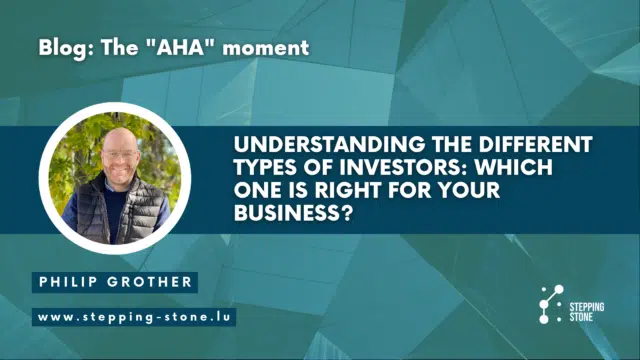As an entrepreneur or small business owner, understanding the different types of investors and how they operate is crucial to finding the right fit for your company. Let’s take a look at some of the most common types of investors and what you can expect in terms of amount invested, traction, and other factors:
- 3Fs (friends, family, and fools or fans):
- These are individuals in your personal network who are willing to invest in your business.
- Amount: The amount invested by 3Fs can vary greatly, but it is usually in the range of a few thousand to several hundred thousand dollars.
- Traction: 3Fs are often more forgiving and understanding if the business doesn’t perform as well as expected, so they may not expect as much traction compared to other types of investors. However, it’s still a good idea to have a clear plan for how you plan to use their investment and how you expect the business to grow.
- Angel investors:
- Angel investors are high net worth individuals who provide capital in exchange for ownership equity in a company. They are typically more hands-off than other types of investors, but they can provide valuable guidance and connections to other industry professionals.
- Amount: Angel investors typically invest anywhere from $25,000 to $100,000 in a company, though some may invest more depending on the opportunity.
- Traction: Angel investors may expect to see some level of traction before investing, such as a solid business plan, a proven track record of sales or revenue, and a clear path to profitability. However, they are often more focused on the potential of the business and the team behind it, so they may be willing to invest in a company with less traction if they believe in its long-term prospects.
- Venture capital (VC):
- VC firms invest in companies with the expectation of a high return on investment. They are generally more risk-tolerant than other investors, as they are looking for companies that have the potential to become industry leaders.
- Amount: VC firms invest significantly larger sums than angel investors, typically in the range of hundreds of thousands to millions of dollars.
- Traction: VC firms typically invest in companies that have already gained some traction and are looking to scale rapidly. They may expect to see strong revenue growth, a clear path to profitability, and a solid team in place. VC firms are also often more interested in the market size and potential of the company, so they may be willing to invest in a company with less traction if it has the potential to become a market leader.
- Private equity (PE):
- Private equity firms invest in companies with the expectation of a high return, but they typically focus on more established businesses that are looking to expand or restructure. They often have a more hands-on approach and may be involved in the day-to-day operations of the companies they invest in.
- Amount: PE firms invest even larger sums, often in the millions or even tens of millions of dollars.
- Traction: Private equity firms generally invest in more established companies that are looking to expand or restructure. They may expect to see a proven track record of profitability and a solid management team in place. PE firms may also look for companies with a large market share or strong competitive advantages.
- Banks:
- Banks offer a range of financial products, including loans and lines of credit, which can be used to finance the growth of your company.
- Amount: The amount that a bank is willing to lend will depend on factors such as the creditworthiness of the borrower and the collateral available. Business loans can range from a few thousand dollars to several million, depending on the needs of the business.
- Traction: Banks may require more traction in order to lend to a business. They may expect to see a solid business plan, a proven track record of sales or revenue, and collateral to secure the loan. The specific requirements will depend on the type of loan being sought and the creditworthiness of the borrower.
It’s worth noting that these are general guidelines and the specific expectations of each investor may vary. It’s always a good idea to carefully consider the expectations and requirements of any potential investor before seeking their funding. No matter which type of investor you work with, it’s important to carefully consider their goals and expectations and ensure that they align with your own. With the right fit, an investor can be a valuable partner in helping you grow and scale your business.


